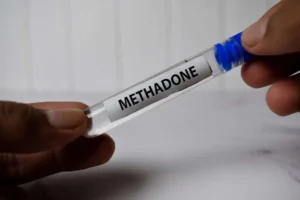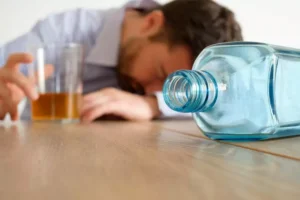Health Topics: Alcohol-Induced Blackouts National Institute on Alcohol Abuse and Alcoholism NIAAA

Abstinence from alcohol generally leads to normalization of the triglyceride levels, unless the person has an underlying genetic predisposition for hypertriglyceridemia. The two most common forms of diabetes are type 1 and type 2 diabetes, with type 2 diabetes accounting for at least 90 percent of all cases. Type 1 diabetes is an autoimmune disease—that is, a disease in which the body’s immune system attacks and destroys not only foreign molecules or organisms but also some of the body’s own cells. In most patients, the disease develops before age 40, primarily during childhood or adolescence. In those patients, the immune system attacks certain cells of the pancreas, called beta cells.
Alcohol And Diabetes – How Does Alcohol Affect People With Diabetes?
Insulin’s effect is always at least somewhat unpredictable, and you also have the delayed blood sugar-lowering effect of alcohol to worry about. The use of rapid insulin could make the morning-after hypoglycemia even more extreme. It may be safer to avoid sugary booze — and safer still to avoid any alcohol in the first place. But some sweet wines and beers have more carbs than others, diabetes and alcohol blackouts and the sugars in cocktails, hard seltzers, and similar drinks can make booze extremely high carb. These drinks may prompt a large and rapid blood sugar spike, necessitating the use of insulin (for those who customarily use insulin before meals). Many spirits (vodka, tequila, and so on) have only trace amounts of carbohydrates; a glass of wine probably has only a few grams of carbs.

Search form
Heavy alcohol consumption may increase a person’s risk for developing this disease. Interestingly, the risk of retinopathy was independent of the men’s ability to control their blood sugar, suggesting that alcohol may directly damage the eyes or related structures. LDL cholesterol is strongly related to cardiovascular disease and stroke and has been called “bad” cholesterol.
For fact sheets in multiple languages including blackouts
So yes, you can still drink, but you need to be aware of how it can affect your body and how to manage this. For example, drinking can make you more likely to have a hypo, because alcohol interferes with your blood sugar levels. It can affect your weight too, as there can be a lot of calories in alcoholic drinks.
Healthy Living e-Newsletter
Ketoacidosis is caused by complete or near-complete lack of insulin and by excessive glucagon levels. Among their many functions, insulin and glucagon regulate the conversion of fat molecules (i.e., fatty acids) into larger molecules (i.e., triglycerides), which are stored in the fat tissue. In the absence of insulin, the triglycerides are broken down into free fatty acids, https://ecosoberhouse.com/ which are secreted into the bloodstream and delivered to the liver. The liver normally re-incorporates free fatty acids into triglycerides, which are then packaged and secreted as part of a group of particles called very low-density lipoproteins (VLDL). In patients with ketoacidosis, however, the liver metabolizes the incoming free fatty acids in an additional, unusual way.
Are some people more prone to blackouts?
- The most important thing to know is that alcohol consumption can cause a significant blood sugar drop (hypoglycemia).
- While a lot of alcoholic drinks contain carbs, you might not need to take your usual mealtime amount of insulin to cover them.
- In people with either type 1 or type 2 diabetes, single episodes of alcohol consumption (i.e., acute alcohol consumption) generally do not lead to clinically significant changes in blood sugar levels.
- Fifty-one percent of the students who had ever consumed alcohol reported blacking out at some point in their lives, and 40 percent reported experiencing a blackout in the year before the survey.
In addition to abstaining from alcohol, moderation and pace are important to preventing blackouts. Avoid binge drinking, which is defined as consuming five or more drinks in about two hours for men, or four or more drinks for women. One study estimated that the odds of experiencing a blackout is about 50% when blood alcohol content reaches 0.22 percent. You may not have any memory of the time that’s passed when your blood alcohol content is above that threshold. Despite what you may have heard, alcohol is not packed with carbohydrates.

When it comes to alcohol and diabetes, two related factors come into play — how diabetes medications and alcohol coexist in your system and the effect that drinking has on your liver. Finally, alcohol can also interact with common medicines prescribed for diabetes, including chlorpropamide (Diabinese), metformin, and troglitazone. Drinking while taking one or more of these medications may cause them to work less effectively and cause side effects such as nausea and vomiting. Although it is possible to drink alcohol on occasion as a diabetic, drinking always has to be closely monitored. A blackout ends when your body finally absorbs the alcohol and your brain can make memories again. Sleep helps end blackouts because rest gives the body time to process the alcohol.
- Liquid sugars are quickly absorbed by the body, so those carbs won’t be much help in preventing or treating a low that may occur hours after you drink.
- Number of published journal articles or reviews that evaluate alcohol-inducedblackouts per year (1985 to 2015).
- The added difficulty of a medical condition like diabetes only makes this worse and can greatly harm both physical and psychological health.
- Subjects also are normally able to recall long-term memories formed before they became intoxicated; however, beginning with just one or two drinks, subjects begin to show impairments in the ability to transfer information into long-term storage.
- Also avoid binge-drinking or sustained drinking, and never substitute alcohol for your meals.
- Other researchers observed that the prevalence of neuropathy in type 1 diabetics increased in a linear fashion with the alcohol amount consumed (Mitchell and Vinik 1987).
Mechanisms underlying alcohol-induced memory impairments include disruption of activity in the hippocampus, a brain region that plays a central role in the formation of new auotbiographical memories. As detailed in this brief review, alcohol can have a dramatic impact on memory. Alcohol primarily disrupts the ability to form new long-term memories; it causes less disruption of recall of previously established long-term memories or of the ability to keep new information active in short-term memory for a few seconds or more. At low doses, the impairments produced by alcohol are often subtle, though they are detectable in controlled conditions. Large quantities of alcohol, particularly if consumed rapidly, can produce a blackout, an interval of time for which the intoxicated person cannot recall key details of events, or even entire events. En bloc blackouts are stretches of time for which the person has no memory whatsoever.

